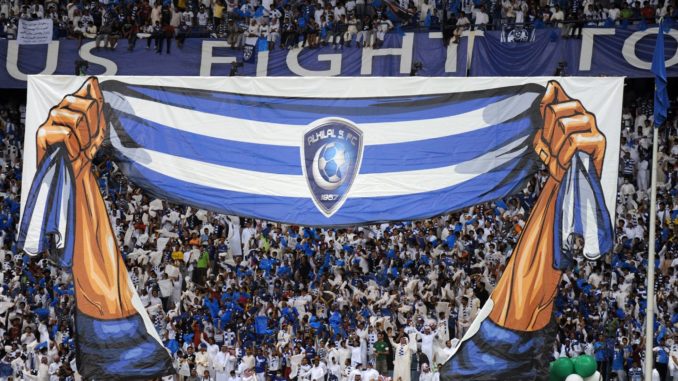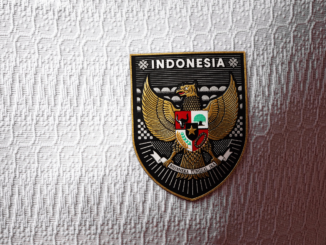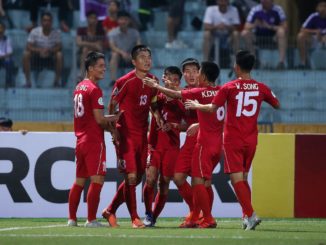
You can use a lot of different metrics to define ‘biggest’ – crowds, trophies, and in the modern world that we live even social media following – and in almost all of those Al Hilal come out on top.
Their matches at the King Saud University Stadium are often at capacity, as were those at the King Fahd International Stadium previously, they are Saudi Arabia’s and Asia’s most successful club and they possess almost 11.5 million followers combined on twitter, Facebook and Instagram.
They are a behemoth.
Of course, biggest doesn’t always equal best. Just look at Al Hilal’s opponent in this year’s AFC Champions League, Urawa Reds of Japan. There is no doubt they are Japan’s biggest club, but they are far from its best, which seems odd to say about a side that could add it’s third continental title this year.
But their performances domestically in the J. League have for some time fallen well short, and again this year they sit in the bottom half of the table only a few points above the relegation zone.
That is a fate that never befalls Al Hilal. In their case biggest does equal best.
The last time they finished outside the top three in the Saudi Pro League was way back in 2003/04 when they finished fourth. In the 15 seasons since they have added six titles, and finished runner-up a further seven times.
In total, domestically they have 15 Saudi Pro League titles (a record), 13 Crown Prince Cups (a record), and eight King Cups. They are a club that demand success, and more often than not, their demands are met.
On the continent they have qualified for the AFC Champions League every year since 2009 (and only failed to qualify three times in the last 20 years), only once failing to make it past the group stage (2018), making the semi final on five of those occasions, while this will be their third final in the last six years.
The only thing missing is another continental title, and while they were the better team in both 2014 and 2017, they came up short on both occasions.
That failure to convert their domination in Asia in recent years into trophies is the only doubt that may linger over the proposition that they are Asia’s biggest club, a title Urawa, Guangzhou Evergrande or perhaps even Jeonbuk Hyundai would think they have a reasonable claim to.
While recent success in Asia has eluded them, it’s worth noting they do hold the record for the most Asian club titles with six across all the various iterations.
Twice they’ve won the Asian Club Championship (essentially the predecessor to the AFC Champions League) in 1991 and 2000, twice they won the Asian Cup Winners’ Cup (1997 and 2002) and twice they won the Asian Super Cup (1997 and 2000).
No other club has won all three competitions.
Even though the Asian Club Championship and AFC Champions League are essentially the same competition, with a shared history, winning the AFC Champions League this year would truly complete the set.
But it’s also about more than just trophies.
Embed from Getty ImagesIt’s also about history, and this is where they leave the likes of Urawa, Jeonbuk and Guangzhou in their wake. None can match the history of Al Hilal, a history that dates back to their formation in 1957.
Along with their rich history of success, dating back to their first ever title in 1976/77, they have developed some of Saudi Arabia’s most decorated players – the likes of Sami Al-Jaber, Mohammad Al-Shalhoub, Nawaf Al-Temyat, Mohamed Al-Deayea and Yasser Al-Qahtani.
Al-Temyat (2000) and Al-Qahtani (2007) were named Asian Player of the Year during their time with Al Hilal, so too in more recent times were Nasser Al-Shamrani (2014) and Syrian striker Omar Khrbin (2017).
No other club has produced as many Asian Player of the Year winners.
There are also intangibles.
There is an aura around Al Hilal that only the biggest clubs across the world possess. Some may call it an arrogance, and it may be, but they would wear that as a badge of honour. They believe with every morsel of their being that they are the biggest and the best.
When you watch an Al Hilal game, or attend the King Saud University Stadium, or previously the King Fahd Stadium, there is something in the thick Riyadh air.
Some of the Western Sydney Wanderers players described the atmosphere at the 2014 AFC Champions League final as the best they’ve ever experienced anywhere in the world, while coach Tony Popovic said it was one of the most hostile and intimidating atmospheres he had ever experienced.
A trip to Riyadh to play Al Hilal really is a step into a cauldron. There are few experiences like it anywhere in Asia. It’s all part of the Al Hilal story.
They will again go into this weekend’s AFC Champions League final, a rematch of the 2017 final against Urawa Reds, believing it is their divine right to win the title.
In their minds, and that of their fans, it’s an indisputable fact that they are Asia’s biggest and best club, the trophy will merely be a reminder of that.
But trophy or no trophy – and they deserve it for their consistency of performance over the last decade – there can be no doubt they are Asia’s biggest club. Winning will just be the icing on the cake.
Photo: AFC Champions League Facebook




